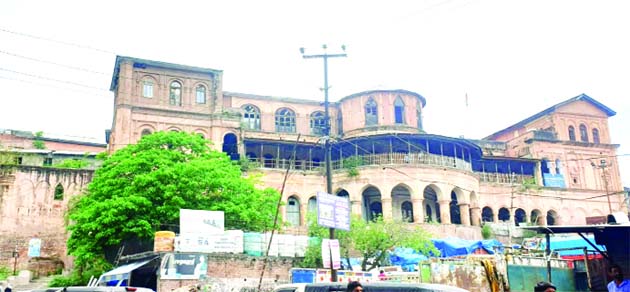The historic Poonch Fort is crumbling due to a combination of factors, including neglect, lack of maintenance, and natural disasters. Insufficient maintenance efforts have led to the decay of its structure and infrastructure. Without regular upkeep, the fort’s condition has progressively worsened. The fort has not undergone significant renovation or restoration work. Historical monuments require periodic restoration to preserve their integrity and prevent further deterioration. The absence of such efforts has contributed to its crumbling state. The Poonch Fort, like Mubarak Mandi, was severely damaged during the 2005 earthquake. The fort’s structural integrity may have been compromised by the earthquake, accelerating its deterioration. The growth of trees, plants, and other vegetation within and around the fort has contributed to its deterioration. Exposure to weather elements such as rain, wind, and temperature variations can cause gradual wear and tear on the fort’s materials. The fort’s current use as a Tehsil office and the presence of officials within the premises may contribute to its degradation.
To prevent the continued crumbling of the Poonch Fort, it is crucial to prioritise its preservation, allocate sufficient funds, and undertake comprehensive restoration and maintenance efforts. The full-fledged Directorate of Archives, Archaeology, and Museums seems to be a dormant department right now. Mubarak Mandi has been handed over to Mubarak Mandi Jammu Heritage Society, and many other forts and palaces are at the mercy of the district administrations, which have neither the expertise nor manpower to take care of these historical monuments. The result is ever-crumbling structures, unable to bear the onslaught of time, weather, and humans.
In Phase-I, the restoration of 37 heritage sites in the Union Territory of Jammu and Kashmir is already underway: 18 in Jammu province and 17 in the Kashmir valley. To ensure that the repair, renovation, and conservation activities strictly adhere to the DPRs already prepared by the Department of Archives, Archaeology, and Museums, the funds have been entrusted to the Deputy Commissioners to carry out the work while preserving the original architecture of the monuments and heritage sites.
The Poonch Fort has also been visited by LG, who instructed officials to carry out the necessary repair and renovation work. It is worth mentioning that the fort is situated in a congested area with multiple encroachments. The Department of Archives, Archaeology, and Museums has repeatedly written to the District Administration, urging them to remove these encroachments, but no action has been taken thus far. Several court cases related to the fort are also pending and require diligent follow-up and resolution. The restoration and preservation of the Poonch Fort, along with other historically significant sites, are planned for Phase II. Detailed Project Reports have already been prepared, and final approval is pending after a comprehensive meeting with the Chief Secretary. However, a crucial consideration will be the allocation of sufficient funds, taking into account the magnitude of the fort’s structure. Additionally, it is essential to ensure the continuity of grants for ongoing repair work.
The Department of Archaeology is facing many bureaucratic hurdles and administrative complexities that make it difficult to carry out effective maintenance activities. Issues such as delayed approvals, bureaucratic red tape, and interdepartmental coordination problems are major hindrances. The Archaeology Department is already short of skilled personnel and experts needed for the specialised work involved in preserving and maintaining historical monuments. The department has already prioritised heritage sites based on their historical significance, tourism potential, or public demand. Some sites are lucky enough to be taken in the first phase, but hopefully, Poonch Fort and other sites get due justice in the second phase.
To address these challenges, the Archaeology Department needs to advocate for increased funding, streamline administrative processes, strengthen their workforce, and foster collaboration with relevant stakeholders. By addressing these issues, the department can enhance its ability to effectively maintain and preserve historical monuments like the Poonch Fort.


